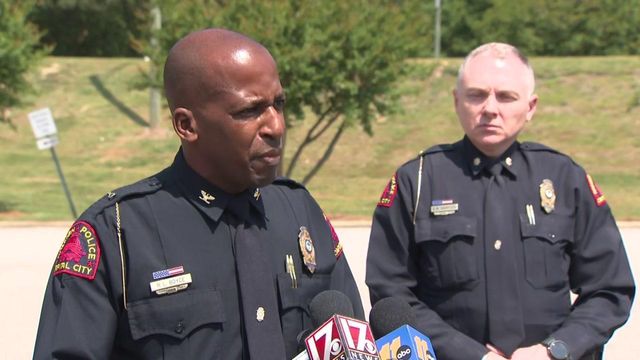McVeigh Guilty in Oklahoma City Bombing

Timothy McVeigh was convicted today of blowing up the Oklahoma City federal building in a murderous attack against his own government that awakened America to the threat of homegrown terrorism.
The 29-year-old decorated Gulf War veteran could get the death penalty for the April 19, 1995, blast that killed 168 people and injured hundreds more in the deadliest act of terrorism on U.S. soil. The federal jury that took 23-1/2 hours over four days to convict McVeigh on all 11 counts of murder and conspiracy will return Wednesday to decide if he should pay with his life.
McVeigh showed no reaction, wearing the same steely expression he had when he was arrested. Hands clasped tightly and pressed against one cheek, elbows on the table, McVeigh remained seated as the verdict was read and stared at the judge. No one comforted him or said anything to him during the verdict reading.
As the jury was polled, the foreman stared at McVeigh the whole time and answered in a loud, firm voice, ``Yes.'' Two jurors had very red eyes and were holding tissues in their hands and appeared close to tears.
Tears welled in the eyes of more than two dozen survivors and victims' family members as they smiled and wept at the same time. Many of them had worried that the case might result in a hung jury or even an acquittal as the deliberations dragged through the weekend.
U.S. District Judge Richard Matsch had warned the spectators before the verdict that he wouldn't tolerate any outburst. But after the judge left the bench, one man raised both fists over his head. People embraced and broke into sobs. They walked out of the courtroom hugging each other and crying.
Cheers erupted outside the courthouse and at the bombing site in Oklahoma City, where about 500 people gathered along the fence to hear the verdict read on televisions set up on the sidewalk. Victims' relatives hugged and wept.
``This gentleman came to town to make an awful extreme political statement of murder and devastation. He made it. He's going to live with the responsibility that our laws provide,'' said Paul Heath, who was in the building at the time of the blast and has served as a spokesman for many of the victims.
Bud Welch, whose 23-year-old daughter Julie Welch died in the bombing, said at the fence: ``You heard most all of them clap. I couldn't do that because McVeigh has put us through so much and now ... I thought it'd all be joy, but it isn't. A very dull victory. The bottom line is my little girl isn't coming back and I have the rest of my life to deal with that.''
In Washington, President Clinton said the verdict heralded ``a very important and long overdue day for the survivors and families of those who died in Oklahoma City.''
``Today, I say to the families of the victims, no single verdict can bring an end to your anguish,'' Clinton said in a statement. ``But your courage has been an inspiration to all Americans. Our prayers are with you.''
Aren Almon, whose daughter Baylee died in the blast and was carried from the building by a firefighter in one of the most famous images of the catastrophe, offered her thanks to the jury.
``I don't think they're going to regret this. They made the right decision. He was guilty. I hope he'll get the death penalty,'' Almon said.
The jurors are barred from discussing the case until its completion.
``This verdict obviously is going to be a matter of great interest,'' the judge told them. ``People can't second-guess your decision. There is no obligation on your part to answer any questions.''
Afterward, McVeigh was escorted out by four U.S. marshals. He shook lead attorney Stephen Jones' hand and the two exchanged whispered words. Just as he was taken out of the courtroom, he shook hands with another of his attorneys, Christopher Tritico.
Jones congratulated prosecutors and the FBI, but citing the gag order imposed by the judge said: ``I simply wanted to say we will be ready for the second stage.''
Prosecutor Joseph Hartzler left the federal courthouse to the applause of crowds lining the downtown streets and gave a thumbs-up.
``We're obviously very pleased with the results. We always had confidence in our evidence,'' Hartzler said. ``We're ready to move on the next stage.''
After the death penalty phase, McVeigh co-defendant Terry Nichols will go on trial on the same charges.
The verdict came just over two years after the thunderous explosion that shattered lives - and brought terror to the nation's heartland.
Prosecutors contended McVeigh drove a Ryder truck loaded with a 4,000-pound fuel-and-fertilizer bomb to the Murrah building and set the fuse in a twisted plot to avenge the FBI siege at Waco exactly two years earlier and spark a second American revolution.
The bomb went off a 9:02 a.m., turning a routine morning at work into a swirl of flying glass, collapsing walls and crumbling concrete. Nine floors collapsed into an area the size of three, crushing the victims, in the words of one rescuer, ``like grapes.'' Among the dead were 19 children, most of whom had just been dropped off at the building's day-care center.
Bloodied and disoriented, survivors staggered out of the building. Many of the dead were so mangled they had to identified by fingerprints, dental records and surgical scars.
The hunt for the bomber yielded one of America's own, a boyish-looking former GI who was raised in the small town of Pendleton, N.Y., and was decorated for his actions as an armored-vehicle gunner in the Persian Gulf.
Immediately after the bombing, there was speculation among members of the public that the attack, like the World Trade Center bombing two years earlier, was the work of foreign terrorists. McVeigh's arrest instead cast a spotlight on America's militia movement and like-minded right-wing extremists who see Waco and the 1992 FBI siege at Ruby Ridge, Idaho, as evidence the federal government is extinguishing the constitutional rights of its citizens.
In the speedy 18-day government case, prosecutors called people close to McVeigh, from his sister to his friends, who testified he divulged detailed plans to bomb the building months before the attack and devoured the anti-government novel ``The Turner Diaries,'' which describes the destruction of a federal building to spark a civil war.
The government also produced rental documents, phone records and witnesses who identified him as the man who rented the Ryder truck under the alias Robert Kling.
The defense countered that McVeigh was swept up in a rush to judgment and tried on the basis of lying, opportunist witnesses and scientific evidence tainted by FBI mishandling and lab contamination. And it stressed the government had no witnesses who could place McVeigh at the bombing scene.
But McVeigh's attorneys were barred by the judge from pursuing the its most controversial theory - that the bombing was part of a larger conspiracy involving overseas terrorists or American white supremacists.
McVeigh was arrested 75 minutes after the explosion about 80 miles north of the blast site. He was pulled over by a state trooper for failing to have a license plate on his yellow Mercury Marquis.
He was in jail on an unrelated gun charge for two days before authorities realized he might have something to do with the bombing. Authorities traced the vehicle identification number on a blown-apart truck axle near the bomb crater to Elliott's Body Shop in Junction City, Kan., where a worker provided information for a composite sketch of the man who rented the truck.
Prosecutors also introduced phone records from a prepaid phone calling card that they said tracked McVeigh's efforts to acquire the ingredients of the bomb, including detonator cord and high-powered fuel to be blended with the explosive ammonium nitrate fertilizer.
A receipt for 2,000 pounds of explosive ammonium nitrate was found in Nichols' home and contained McVeigh's fingerprints. The FBI lab tested McVeigh's clothes and earplugs and found traces of explosives.
In its compact, 3 1/2-day case, the defense attacked evidence examined by the much-maligned FBI crime lab. FBI whistle-blower Frederic Whitehurst said the clothes were handled by improperly trained scientists and tested in an area contaminated with explosives residue.
The defense also called witnesses to raise the specter of another, as-yet-anonymous bomber, who may have died in the blast, leaving only his mangled leg in the rubble. One Elliott's employee recalled seeing two men come into the shop to rent the truck; she couldn't identify either.
By STEPHEN K. PAULSON,Associated Press Writer Copyright ©1997 Associated Press. All rights reserved. This material may not be published, broadcast, rewritten, or distributed.









